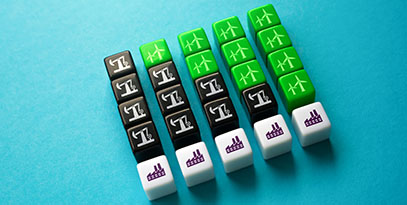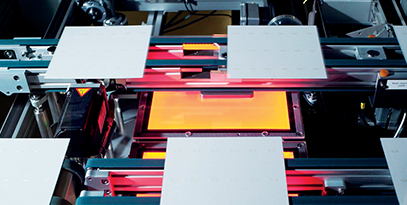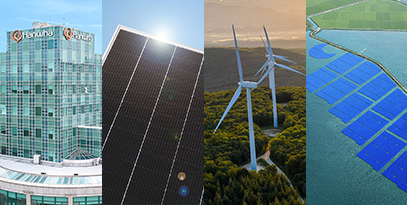COP28: Accelerating Global Progress for Clean Energy

For those living in the Northern Hemisphere, the cooler autumn days have brought some long-awaited relief from the hottest summer on record. Between June and August, extreme heatwaves triggered a domino effect of subsequent climate change-related natural disasters including floods, hurricanes, and wildfires, confirming that urgent steps must be taken now to mitigate further warming and realize net zero.
With these events unfolding before our eyes, COP28 cannot be just another climate conference. Instead, this event is anticipated to be a critical opportunity for compelling, decisive, and aligned action. The thematic program for COP28, the 28th annual United Nations climate meeting in Dubai, centers on uniting stakeholders from various backgrounds around specific, scalable solutions that limit global warming to 1.5 degrees Celsius, build resilience, and boost economic growth. These goals directly correspond with the anticipated Global Stocktake review, which is a transparent assessment of progress towards achieving the Paris Agreement’s long-term targets. As a pivotal moment for urgent climate action, government leaders, businesses, stakeholders, and citizens alike will be looking for those in attendance to lead by example while taking bold steps in building consensus, prioritizing a pragmatic energy transition, and mobilizing solutions in the world’s developing areas.
Mounting environmental and economic challenges and extreme weather events demand that we find a path that prioritizes lowered CO2 emissions, economic development, and global energy security. Yet, inflation and geopolitical conflict add further complexity to an already intricate situation as governments struggle to balance economic growth and environmental protection. How can we ensure that the green energy transition occurs together with both climate and economic stability? Experts argue that it’s possible, but it will take international cooperation and cross-sectoral leadership to ensure that each country can find a path to transition that meets its individual needs.
A World in Transition
The International Energy Agency (IEA) sheds light on the green energy transition’s current challenges and recent progress in its updated Net Zero Roadmap. According to the report, limiting global warming to 1.5 degrees Celsius remains possible, but requires greater ambition, widespread implementation of climate-friendly systemic changes, and stronger global cooperation. The entire world must collectively rally towards net zero targets if we are to avoid the most harmful outcomes of climate change. This not only means more widespread adoption of clean energy, but also building out the required infrastructure to facilitate such adoption, updating policies, targeting financial assistance and energy subsidies, and streamlining permitting processes. While some countries are already well on their way to overhauling their energy systems, others continue to lag due to barriers including cost, inadequate or outdated power grids, lack of infrastructure, and logistical issues.
Because of these gaps, getting to net zero will require energy solutions that can support a multitude of energy needs and broad applications. That’s why Hanwha is hard at work building both interim and long-term clean energy solutions that address end-to-end energy needs on an international scale. As Hanwha Group Vice Chair Dong Kwan Kim stated, “There is no ‘one-size-fits-all’ solution that will remove all barriers to the energy transition. Progress requires a nuanced approach that accounts for each nation’s circumstances — from its resources to the economic conditions.” From wind and solar power to hydrogen and liquefied natural gas (LNG), Hanwha’s aim is to create a diverse range of transformative energy solutions that lead the transition to a decarbonized world.
Diverse Solutions, Collective Progress
In an era of shifting energy landscapes, it is vital to fortify both energy access and security in the solutions we develop and implement. This calls for a diverse set of energy sources that work together to stabilize sustainable energy infrastructure even as we work to expand it. What does diversity mean for energy? Energy diversification looks like using different suppliers, transportation routes, and energy sources so that a country can insulate itself from energy disruptions. Since different regions have their own energy needs and resources, ensuring a stable supply of reliable energy requires a diverse mix of sources. To achieve both a clean energy transition and a net-zero world, the majority of the energy mix must be comprised of clean energy sources. Although there has been an increase in clean energy infrastructure, resources, and investments, bolstered efforts are needed to further solidify local energy supplies that are both Earth-conscious and reliable.
As a comprehensive energy solutions provider, Hanwha is positioned to make significant contributions in this space, utilizing its know-how to build strong and secure clean energy systems. Vice Chair Kim explains, “Hanwha is improving stability and catalyzing the global energy transition with innovative technologies that power an advanced portfolio of green energy solutions — from next-generation solar modules to offshore wind farms.”
A clean energy transition does not only require diversity, however. As we march forward toward the energy transition, a chasm remains between the number of resources we currently have and what we need to meet net zero targets. Therefore, a massive and immediate scale-up of energy transition technologies is required to fill this gap. Hanwha Qcells, an industry-leading clean energy solutions provider, is making major moves to meet present and future clean energy needs. A recent expansion of its U.S.-based Dalton, Georgia factory, the largest manufacturing plant of its kind in the Western Hemisphere, has added another 2 gigawatts (GW) of solar capacity to the site, bringing its full output to more than 5.1 GW. The momentum doesn’t stop there. This expansion marks the first phase of a historic $2.5 billion investment announced by Hanwha Qcells in January that encompasses the Dalton factory expansion as well as a new development in Cartersville, Georgia. The significant investment will create thousands of clean energy jobs and provide enough renewable energy to power 1.3 million homes annually. Hanwha has also invested in REC Silicon, a hydro powered polysilicon manufacturer, to establish a fully integrated solar supply chain in the North American market. With this, Hanwha is not only expanding its production of solar panels but making its clean energy portfolio even cleaner.
Hanwha’s vision doesn’t end with solar energy. The company is expanding its reach in onshore and offshore wind projects, which has been named an important area for curbing climate change and boosting economic growth. Hydrogen is also growing in popularity due to its potential capacity to decarbonize a range of sectors, including those that are hard to abate such as long-haul transportation. It is also eyeing additional opportunities in ammonia, which has been identified as a potential sustainable hydrogen energy carrier and a carbon-free energy source, as well as solutions to enhance energy stability such as distributed energy solutions (DES).
“The current energy transition is unlike anything society has experienced before, so it requires a multi-faceted plan of action,” states Vice Chair Kim. “We believe our innovative solutions can contribute to greater energy stability, while enabling us to scale renewables to levels we need to hit net-zero goals.”

High Time for Global Change
COP28 in Dubai stands as a historical moment for global leaders, policymakers, and stakeholders. This year’s event calls for a united front in combating climate change while stabilizing economic growth and moving the needle towards palpable progress. Hanwha is committed to this cause with a robust ecosystem of diverse energy solutions that extend to the farthest corners of the globe. Along with COP28, we will continue to embrace the challenges of the energy transition as opportunities for growth, exploring and innovating for positive, lasting change.







